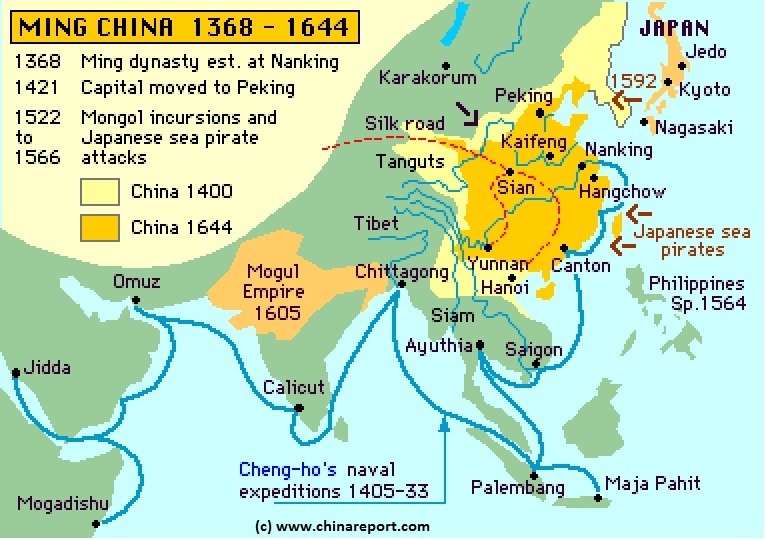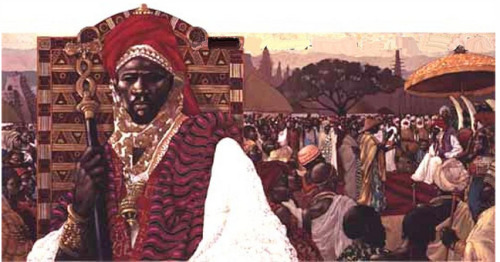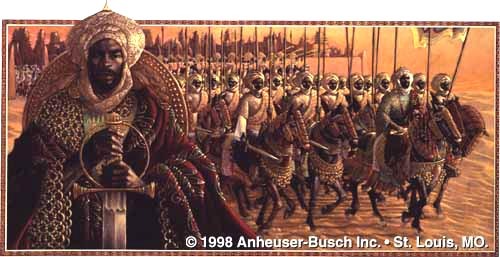Monday, 27 January 2014
The Mughal empire (1526-1857)
Origins
The history pf India stretches back
thousands of years over the centuries many different people invaded India such
as the Greeks and the Mongols. They were attracted by fertile land opportunities
for trade and for its resources such as spices, silk and precious stones. The
result of this was a rich mix of people.

Government and society
In 1526 the Mughal leader Babur invaded India.
The Mughals were a Muslim dynasty who originally came from Persia. They conquered
the local sultan and established their capital in Delhi. They remained dependent
on the support of local rulers who were mostly Hindu. The local rulers were
allowed to remain in power as long as they paid their taxed to the Mughal
leader. As a result many landowners and merchants kept their power and wealth.

Women in Mughal India.
In India society men controlled political
and economic power and women would subordinate them.in the Mughal empire wives
and mistresses of nobility were kept out of public sight in separate areas of
the house.in the mogul court women were educated and influence poorer women
works in the farms under weir under control from their husbands.

Travel and trade
Under the Mughals trade increased and
important communities grew which had contacts with china and south east asia.in
the 16TH century ships from Europe started to visit India. Indian mechanist
gained new trade opportuinites.in 1600 English merchants set up the English
east India Company (EIC) to trade in India. The bought cotton goods, silks,
peppers and spices.in return for gold copper and zinc.

The decline of the Mughal Empire
At its height the Mughal Empire controlled
nearly the whole of modern india.in the second half of the 17TH century
it began to decline. Rulers broke up in revolt and Mughal was wreaked by invasions
from Persia and Afghanistan. As there power wreaked the EIC became to setup
forts and were defended by garrisons. People surrounding the asked for
protection and them EIC began to gain authority. Eventually the EIC became to
setup it authority through india.by the 19TH century the EIC with
its army and administrators extended its power through India. The became the dominant
power in India. They introduced new landowners and taxes. They were uprising
but London sent troops to crush them. The births government abolished the EIC
and Indian became a colony of Births Empire.

Sunday, 26 January 2014
The Ming dynasty (1368-1944)
Origins
The Ming dynasty ruled China from about 1368
to 1644 CE. For nearly 100 years, China had been ruled by the Mongolian empire.
When a group called the Red Turbans attacked the Mongols in the mid-1300s, it
began a peasant rebellion that overthrew the Mongols. The leader of that
rebellion and the first emperor of the newly established Ming dynasty was Zhu
Yuanzhang.

The Ming
The Ming were absolute rulers .Ming
emperors ruled in the Forbidden City, an imperial palace in Beijing which was
the capital of the Ming and received news through servants and administrators.
They never dealt with normal peasants and never left the Forbidden City. In
order to protect themselves from invasion, the Ming emperors built the Great
Wall of China. It featured watch towers, signal towers, and barracks for
troops. The Ming encouraged study of cultural traditions and provided financial
support for academics and colleges.

Women in Ming china
Women in Ming china were seldom wealthy
properties owners with a small influence. But the majority of women in Ming
china were valued only to have children. Lower class women worked in fields
alongside men. Middle class women worked as weavers. Though upper class women
were often crippled by the foot binding practice at a very young age. Purpose
was to keep their feet small and was seen as female beauty.
China during the Ming dynasty
The economy as a whole experienced growth
and I rise in population in china. They had about one quarter of the world’s
population during the Ming dynasty. They were a very advanced society for
example they invented printing, paper and gunpowder centuries before the
Europeans did.
Trade
The Chinese sent their silks, porcelain and
tea to western Asia and Europe via the Silk Road. They also traded by sea to
japan and countries around the Indian Ocean. Under the Ming many ships were
built. The emperor sent many trade fleets to explore the Indian Ocean and the
voyages were led by admiral Zheng.

The decline
China began looking inwards after 1433.
When the Dutch attacked Chinese ships raided the south east coast the chine
navy defeated them and they retreated to Taiwan. There were threats from the Mongols
and also the Manchu. China became distrustful of strangers and became inward
looking and concentrated on becoming strong and self-sufficient. The Ming
Empire slowly went in decline and was weakened by power struggles between court
officials.
Coming to the end
The growing power of the Jurchen and Manchu
nomadic tribes in the northwest threatened the Ming, however peasant uprisings
in the northwest kept the army busy in that area. In the 1590s Japan invaded
Korea which brought Chinese armies into Manchu territory. Though they pushed
back Japan, their armies were weakened and allowed the Manchu tribes to conquer
Korea. The Manchu tribes then waged war with China. The cost of war could not
be paid because the peasant taxpayers were still in revolt. The final Ming
emperor hanged himself in 1644 in his temple surrounded by rebels and allowing
the invaders to establish the Qing dynasty.

The songhai empire in the 15TH and 16TH centuries (1340-1591)
Origins
In the years around 700 AD there was a
series of great kingdoms developed in West Africa each of them became powerful
in turn because they controlled the trade of salt and gold trade across the Sahara
desert. The kingdoms that controlled these were Ghana followed by Mali and
eventually Songhai.
The Songhai
The Songhai had settled on both sides of
the middle Niger River. They established a state in the 15th century, which was
a large part of the western Sudan and developed into a powerful civilization.
It was ruled by the dynasty or royal family of the Sonni from the 13 century to
the late 15 century. The capital was at GAO, it was surrounded by a wall. It
was a diverse market place where kola nuts, gold, ivory, slaves, spices, palm
oil and precious woods were traded in exchange for salt, cloth, arms, horses
and copper.

Songhai government
Islam had been introduced to the royal
court of Songhai in 1019, but most peasants remained faithful to their
traditional religion. The monarchy based at GAO ruled with absolute power.
People paid taxes to the king in return for internal and external security. The
royal court was responsible for the administration and the army. Large estates
belonged to nobles. They were worked by slaves that did the fishing, animal
raising for milk, meat and skins, and the agricultural work.

Women in the Songhai Empire
They participated in many actives such as
some were traders and were as important as men. Wealthy women were sometimes
educated and had control over their own property and resources.in the 16-17
centuries poorer women often worked as servants and wealthy households. A few
were slaves and some were kept for sexual services.

Trade
The Songhai had to build and maintain a
large army to keep order. This helped trade to be carried peacefully through
the empire. Trade expanded in Europe which brought in European cloth, horses
and weapons which were traded for slaves, leather goods and ivory from West Africa.
Huge caravans traded goods across the Sahara desert and as a result commercial
cities such as Timbuktu became commercial centers.

Learning and culture
Arab traders brought Islam to Africa in the
8TH century. Many rulers and merchants accepted Islam as their
religion. African kingdoms adopted muslin ideas and learning. As this time
knowledge of mathematics, astronomy and medicine was very advanced. Askia Mohammed
a ruler welcomed Islamic scholars to Timbuktu which was the Centre of learning
for the Songhai.is was 1 of the first universities of the world.

The fall of the Songhai Empire: the Moroccan
invasion in 1591
During the 16TH the Songhai kings
were losing control over their empire. They also didn’t control trade and
struggle for power led to civil wars. But the real reason for the fall on the Songhai
Empire was gunpowder. In 1591 the Moroccan army invaded Songhai and after
defeating the Songhai they plundered cities like GAO and Timbuktu. But after 25
years the Moroccans lost power and the Songhai Empire split into separate independent
kingdoms.
Subscribe to:
Comments (Atom)